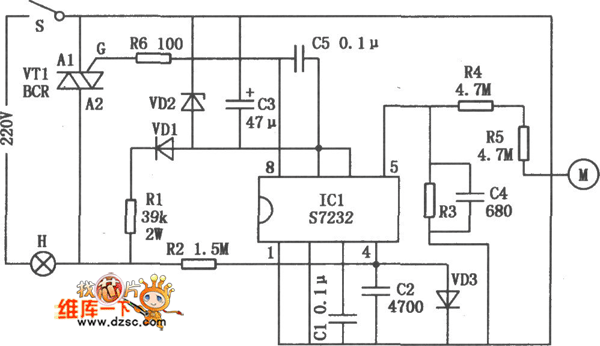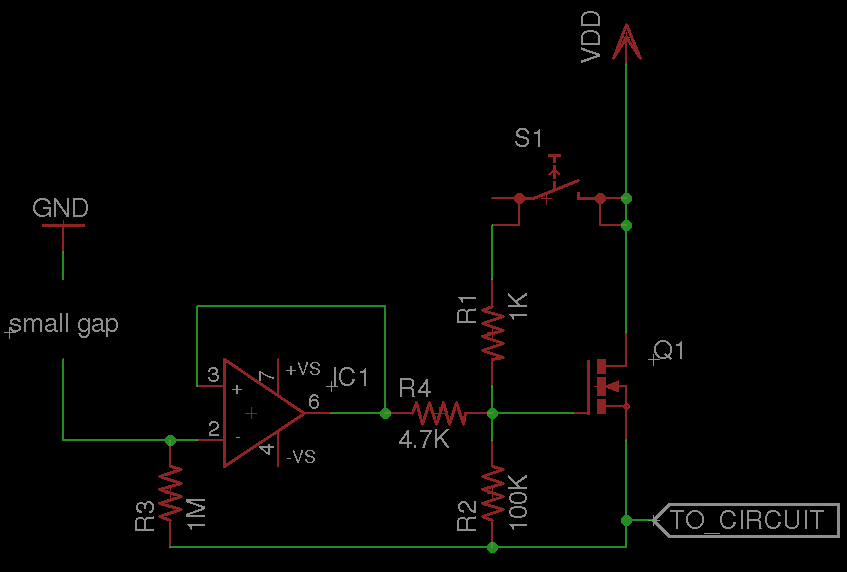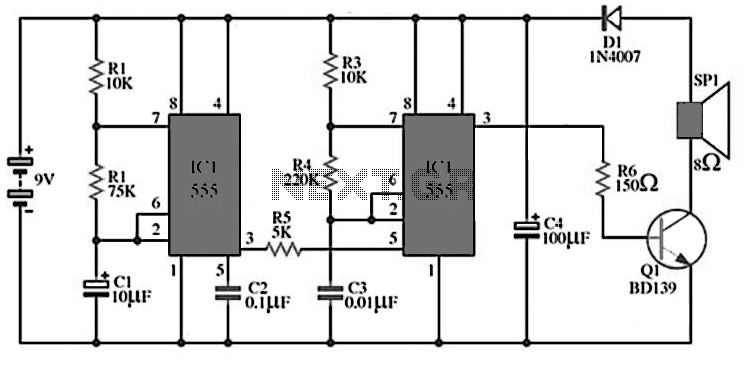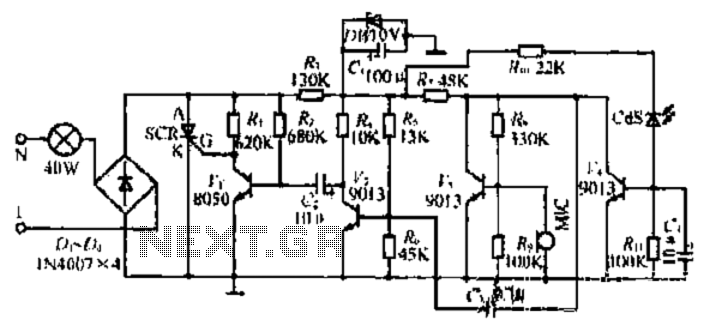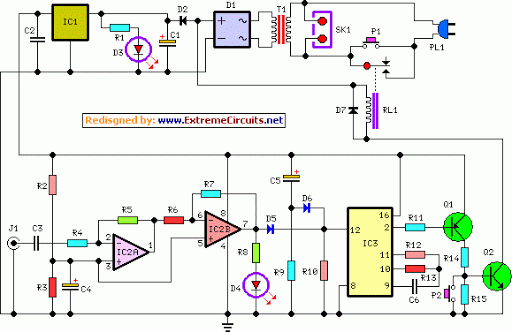
0 To 12V, 1A Variable Power Supply Circuit

This 0- to 12-Vdc variable power supply utilizes an integrated circuit (IC) voltage regulator along with a robust transformer to deliver a dependable DC power output. The schematic illustrates that transformer T1 has a primary voltage of 120 V and a secondary voltage of 28 V. The filtered DC voltage is supplied to the input (pin 2) of the LM317T voltage regulator, IC, which maintains a constant output voltage (pin 3) regardless of variations in the input voltage, within specified limits. Pin 1 of the LM317T serves as the adjustment pin; altering the voltage on pin 1 (through resistor R1) modifies the output voltage. Diodes D5 through D7 and LEDs L1 through L3 provide a visual indication of the output voltage level. Each LED/diode circuit includes a limiting resistor to ensure that the current remains at a safe level for the LED.
The 0- to 12-Vdc variable power supply design begins with a step-down transformer (T1), which converts the high voltage (120 V AC) from the mains to a lower voltage (28 V AC). This secondary output is then rectified and filtered to produce a smooth DC voltage. The rectification can be achieved using a bridge rectifier configuration, which typically consists of four diodes arranged to convert the AC voltage to pulsating DC. Following this, a large electrolytic capacitor is used to filter the output, reducing ripple and providing a stable DC voltage.
The heart of the power supply is the LM317T voltage regulator, which is a versatile adjustable three-terminal device. The input voltage at pin 2 is subjected to regulation, ensuring that the output voltage at pin 3 remains stable and within the desired range. The adjustment pin (pin 1) is connected to a resistor (R1), which allows for the output voltage to be set between 1.25 V and 12 V. By varying the resistance of R1, the output voltage can be fine-tuned according to the requirements of the load.
To provide an output voltage indication, the circuit employs a series of diodes (D5-D7) and light-emitting diodes (L1-L3). These components are strategically placed to light up in accordance with the output voltage level, giving a visual representation of the voltage being supplied. Each LED or diode path is equipped with a current-limiting resistor to prevent excessive current flow, ensuring the longevity and proper functioning of the indicators.
This configuration offers an efficient and reliable solution for applications requiring a variable DC power supply, making it suitable for a variety of electronic projects and testing environments. The design emphasizes safety and functionality, providing users with a robust tool for powering their electronic devices. This 0- to 12-Vdc variable power supply uses an IC voltage regulator and a heavy-duty transformer to provide a reliable dc power supply. Looking at the schematic shown, you can sec that transformer Tl has a 120-V primary and a 28-V secondary.
Filtered dc is fed to the input (pin 2) of the LM317T voltage regulator, IC, which keeps the voltage at its output constant (pin 3) regardless (within limitations) of the input voltage. Pin 1 of the LM317T is the adjustment pin. Varying the voltage on pin 1 (via PI) varies the output voltage. Diodes D5 through D7 and LEDs LI through L3 give an approximate indication of the output voltage. Each LED/diode path has a limiting resistor to limit the current to a level that is safe for the LED. 🔗 External reference
The 0- to 12-Vdc variable power supply design begins with a step-down transformer (T1), which converts the high voltage (120 V AC) from the mains to a lower voltage (28 V AC). This secondary output is then rectified and filtered to produce a smooth DC voltage. The rectification can be achieved using a bridge rectifier configuration, which typically consists of four diodes arranged to convert the AC voltage to pulsating DC. Following this, a large electrolytic capacitor is used to filter the output, reducing ripple and providing a stable DC voltage.
The heart of the power supply is the LM317T voltage regulator, which is a versatile adjustable three-terminal device. The input voltage at pin 2 is subjected to regulation, ensuring that the output voltage at pin 3 remains stable and within the desired range. The adjustment pin (pin 1) is connected to a resistor (R1), which allows for the output voltage to be set between 1.25 V and 12 V. By varying the resistance of R1, the output voltage can be fine-tuned according to the requirements of the load.
To provide an output voltage indication, the circuit employs a series of diodes (D5-D7) and light-emitting diodes (L1-L3). These components are strategically placed to light up in accordance with the output voltage level, giving a visual representation of the voltage being supplied. Each LED or diode path is equipped with a current-limiting resistor to prevent excessive current flow, ensuring the longevity and proper functioning of the indicators.
This configuration offers an efficient and reliable solution for applications requiring a variable DC power supply, making it suitable for a variety of electronic projects and testing environments. The design emphasizes safety and functionality, providing users with a robust tool for powering their electronic devices. This 0- to 12-Vdc variable power supply uses an IC voltage regulator and a heavy-duty transformer to provide a reliable dc power supply. Looking at the schematic shown, you can sec that transformer Tl has a 120-V primary and a 28-V secondary.
Filtered dc is fed to the input (pin 2) of the LM317T voltage regulator, IC, which keeps the voltage at its output constant (pin 3) regardless (within limitations) of the input voltage. Pin 1 of the LM317T is the adjustment pin. Varying the voltage on pin 1 (via PI) varies the output voltage. Diodes D5 through D7 and LEDs LI through L3 give an approximate indication of the output voltage. Each LED/diode path has a limiting resistor to limit the current to a level that is safe for the LED. 🔗 External reference
